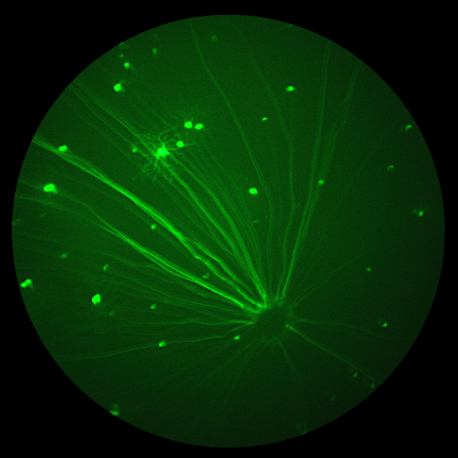For astronauts gazing out at the vastness of space, their eyes are not just windows to the cosmos but sensitive and vital instruments that must endure the challenging environment of life beyond Earth’s atmosphere. Although pressure suits, capsules, and space stations provide critical protection, astronauts are constantly exposed to extraterrestrial forces that impact various organ systems despite these advanced technologies. Notably, over 70% of long-duration astronauts have experienced eye and brain structural alterations, known as Space-Associated Neuro-Ocular Syndrome (SANS). Changes to the eye include optic nerve swelling, retinal folds, flattening of the back of the eye, headaches, and blurry vision. For many, this may happen only during the mission, while for others, it can result in permanent damage. Researchers suspect that microgravity and space radiation play a role in these changes; however, a definitive cause has not yet been determined.
One of the exciting applications of MICRON® technology has been in space-related vision research. In the paper Evidence of Spaceflight-Induced Adverse Effects on Photoreceptors and Retinal Function in the Mouse Eye, Dr. Xiao Wen (Vivien) Mao of Loma Linda University Health, Loma Linda, California, used the MICRON Ganzfeld electroretinography (ERG) system to “shed light” on the effects of microgravity and space radiation on ocular health. Previous studies identified an increase in oxidative stress and photoreceptor damage in the retinas of mice exposed to spaceflight conditions compared to ground controls. Research conducted on the International Space Station, on mice flown as part of Rodent Research-18 on NASA’s SpaceX-24, specifically examined an antioxidant protector compound to determine if it would shield normal tissue from radiation-induced damage. These findings are crucial for developing strategies to protect astronauts’ vision during long-duration missions.
Dr. Mao’s interest in the effects of proton radiation in space is a natural extension of her personal interest in spaceflight, as well as her early career in radiation medicine at Loma Linda University School of Medicine (LLUMC). LLUMC housed the first hospital-based proton therapy center in the United States, which had opened in 1990. Proton therapy enables precise tumor targeting, reducing damage to surrounding healthy tissues—a technique directly relevant to her research, as roughly 85% of cosmic rays consist of protons. With access to this advanced proton center, Dr. Mao was able to investigate the effects of radiation on the retina. As a result of the SpX-18 and SpX-24 missions, she not only identified molecular, structural, and pathological changes in the retina of mice but, for the first time, demonstrated that spaceflight induced functional changes in photoreceptors, as evidenced through the MICRON Ganzfeld electroretinography (ERG). Her work has significant implications for understanding the impact of space environmental stressors on vision.
Potential countermeasures, such as antioxidant therapies, extend not only into space exploration but also apply to terrestrial disorders such as age-related macular degeneration, diabetic retinopathy, and other neurovascular disorders.
The versatility of MICRON systems for in vivo pre-clinical small animal eye-brain research has also facilitated studies in areas such as gene therapy, stem cell treatments, and the development of novel drug delivery methods for ocular diseases. By providing high-resolution, real-time imaging of the retina and other ocular structures, our technology allows researchers to observe disease progression and treatment efficacy with unprecedented detail.
We remain committed to pushing the boundaries of ophthalmic imaging. We continue to refine our technology to meet the evolving needs of researchers and clinicians, with the ultimate goal of preserving and restoring vision for people on Earth and in space.
Citation:
Mao X, Stanbouly S, Holley J, Pecaut M, Crapo J. Evidence of spaceflight-induced adverse effects on photoreceptors and retinal function in the mouse eye. Int J Mol Sci. 2023;24(8):7362. doi:10.3390/ijms24087362.





